“Lock”ed Out: Waterway System Updates Crucial to Profitability
Expiration dates are included on products such as food and drink, batteries and medicine to indicate they may not be safe or reliable to consume after the indicated time. Often, risks can be associated with using an expired product. The same could be said for waterway locks and dams. While they don’t come with an expiration date, they do come with an engineered lifespan of about 50 years. Many locks have been in use for close to 80 years, with minimal improvements, due to a lack of funding. Locks in use beyond their lifespan can increase the risks of [...]
Off To The “Traces” (Micronutrients)
Are you paying enough attention to your crop’s micronutrient (trace element) needs today? The uptake of the trace elements iron (Fe), zinc (Zn), manganese (Mn) and copper (Cu) by roots is governed by three basic principles. Their presence in the soil: Many ag soils have very low natural levels of Fe, Zn, Mn and Cu and they need to be added as fertilizer to maximize crop production. There are also soils where one or more of these trace elements is abundant, but they are tied up by the soil chemistry. Their presence in the soil solution: It is the [...]
Harvesting High Moisture Wheat
If you double-crop soybeans after wheat, consider harvesting the wheat at high moisture. If you double-crop soybeans after wheat and want to increase soybean yield, manage the previous wheat crop by planting an ultra-early variety and harvesting high moisture wheat. By adopting the early wheat system, you can harvest wheat sooner, plant soybeans earlier and increase soybean yield, maybe as much as a bushel a day. What defines the early wheat system? Plant wheat earlier in the fall: 3 – 5 days gain on soybean planting Plant an ultra-early wheat variety: 3 to 5 days gain on soybean planting [...]
Sporecaster: Smartphone App Aids in White Mold Treatment Decisions
Sclerotinia stem rot, more commonly referred to as white mold, can be a devastating disease in soybeans. Yield losses can be extreme when conditions favor the development of the disease. Treatment options have historically been few, and the ones available have been difficult to decide to use and to time for the best control. Adding to the frustrations associated with trying to treat soybeans for white mold is the fact that treatments have to be made before symptoms appear. Dan Davidson posted an excellent description of the symptoms of this fungal disease last year on ILSoyAdvisor https://www.ilsoyadvisor.com/on-farm/ilsoyadvisor/controlling-white-mold. White mold [...]
Soybean Cyst Nematode: Race Shifts and Grass Cover Crops as a Potential Alternative Control
Article originally posted on the Bulletin. Among the various soybean pests, Heterodera glycines Ichinohe, known by most as soybean cyst nematode (SCN), continues to be a persistent cause of yield loss for soybean producers1. SCN has been found in every county in Illinois, as well as much of the eastern United States, Puerto Rico, and parts of Hawaii and Canada2 (Figure 1). Figure 1. Map of the known distribution of the soybean cyst nematode, Heterodera glycines, in the United States and Canada from 1954 to 2017. Known infested counties are indicated in red. Map © C. C. Marett and [...]
Remediating Abiotic Stress
Abiotic stress impacts metabolism, growth and yield—it’s that simple. Abiotic stresses are caused by drought, excessive water-logging or flooding, extreme cold or heat, salinity, acid pH and mineral toxicity, such as aluminum and iron at acid pH. Biotic stress is induced by insects, disease pathogens and weed pressure. Physiologists study abiotic stresses and how they impact plant metabolism. University and commercial seed company breeders screen and select breeding lines that have tolerance or resistance to abiotic stresses. For example, today’s soybean varieties are more tolerant of drought, heat and cold temperatures than a decade ago, yet these stresses can [...]
Understand and Manage SCN: 4 Proven Tips
Two decades ago, farmers had a problem with Soybean Cyst Nematodes invading their fields, taking over and causing major yield losses. But soon after, SCN resistant varieties were introduced and the problem seemed to be solved. As most farmers went back to managing their crops and thinking about SCN as a backburner issue, the nematode was slowly working behind the scenes, developing resistance and, once again, wreaking havoc on soybean fields across the country. Thankfully, dedicated researchers have been watching for this all along. That’s why the SCN Coalition is back, with research-based tips to manage and beat SCN. [...]
Set Yourself up for Success in Double-Crop Soybeans.
Double-cropping soybeans can be a success with the right plan in mind. There are several things growers need to do to set themselves up for success when planting double-crop soybeans after wheat. First, ensure you get a good, even distribution of harvested materials as you cut wheat. Make sure to have a properly adjusted combine to manage the residue not only in the machine, but that it can evenly distribute that residue behind the machine. Good, even distribution of residue will help to ensure good seed to soil contact and good even emergence of soybeans Next, do a good [...]
Banding and Biologicals
Here at AgriEnergy Resources in Princeton, Illinois, we have long promoted banding fertilizer and using biological products to boost fertilizer use efficiency in both corn and soybeans. That combination has a long, proven track record for corn. We’re learning soybeans will respond as well. Many growers have found they can get excellent corn yields, even on low fertility soils, by banding phosphorus and potassium with the corn planter and sidedress application. Several of our Indiana growers have been using these same concepts to enhance their soybean fertility program and are increasing yields as a result. Many are growing 70 [...]
Interseeding Covers
There are vast differences in the crop growing season from Northern to Southern Illinois. These differences can cause challenges in the establishment and growth of a cover crop. In Northern Illinois, spring weather conditions warm up later and harvest tends to be later in the fall past the appropriate time for seeding cover crops and an earlier killing frost typically occurs. In Southern Illinois, spring conditions arrive much earlier and harvest is earlier and there are more days ahead of a killing fall frost. Alternative methods of cover crop establishment are being explored throughout the state and across the [...]


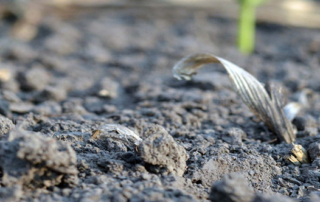



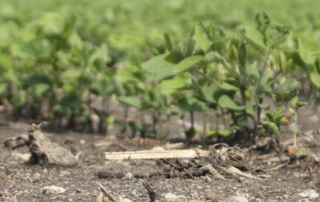
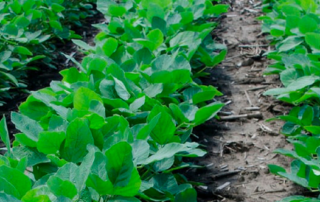
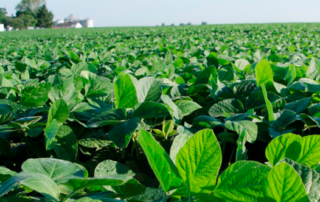

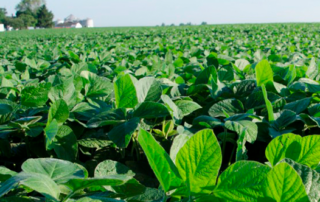

 and then
and then